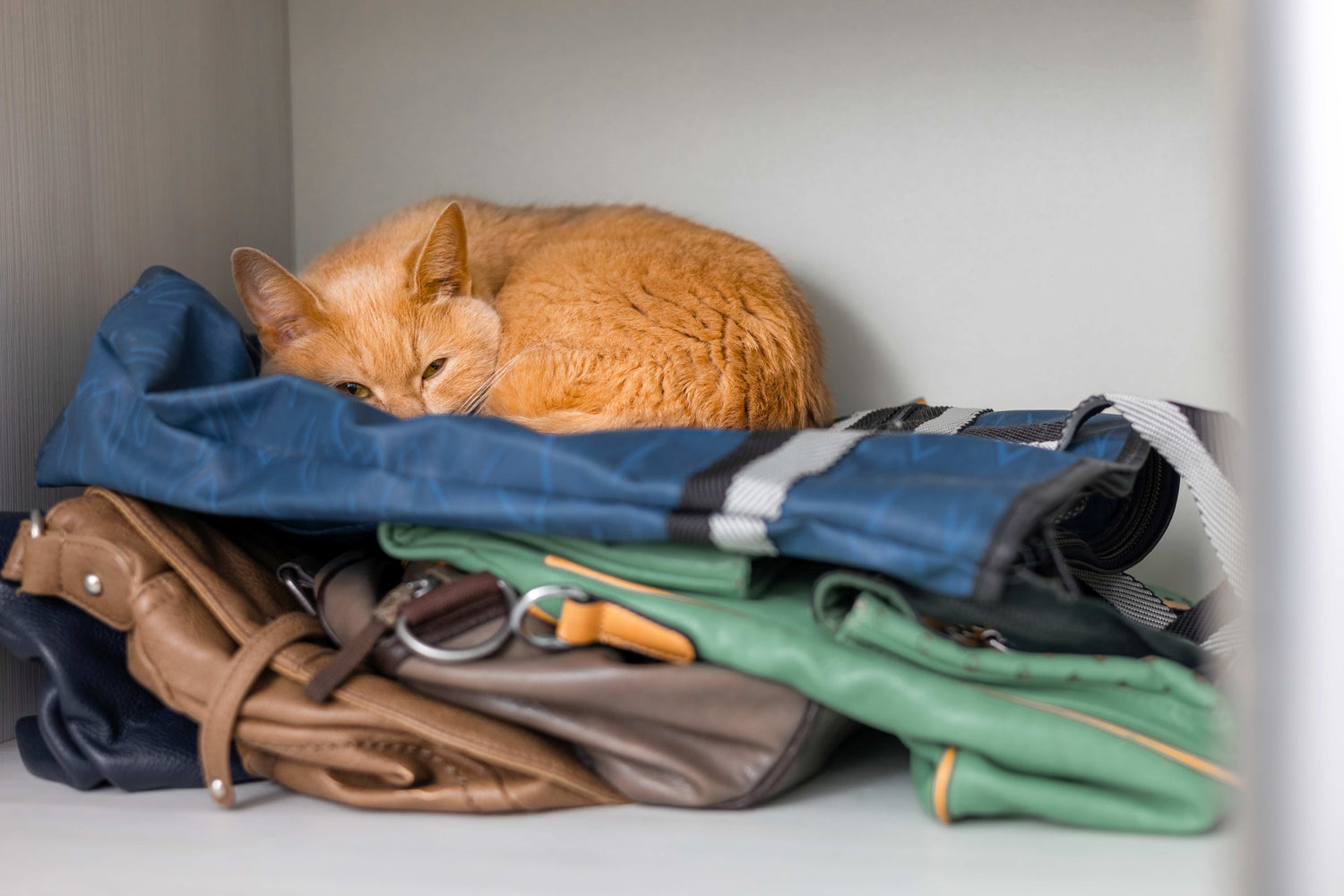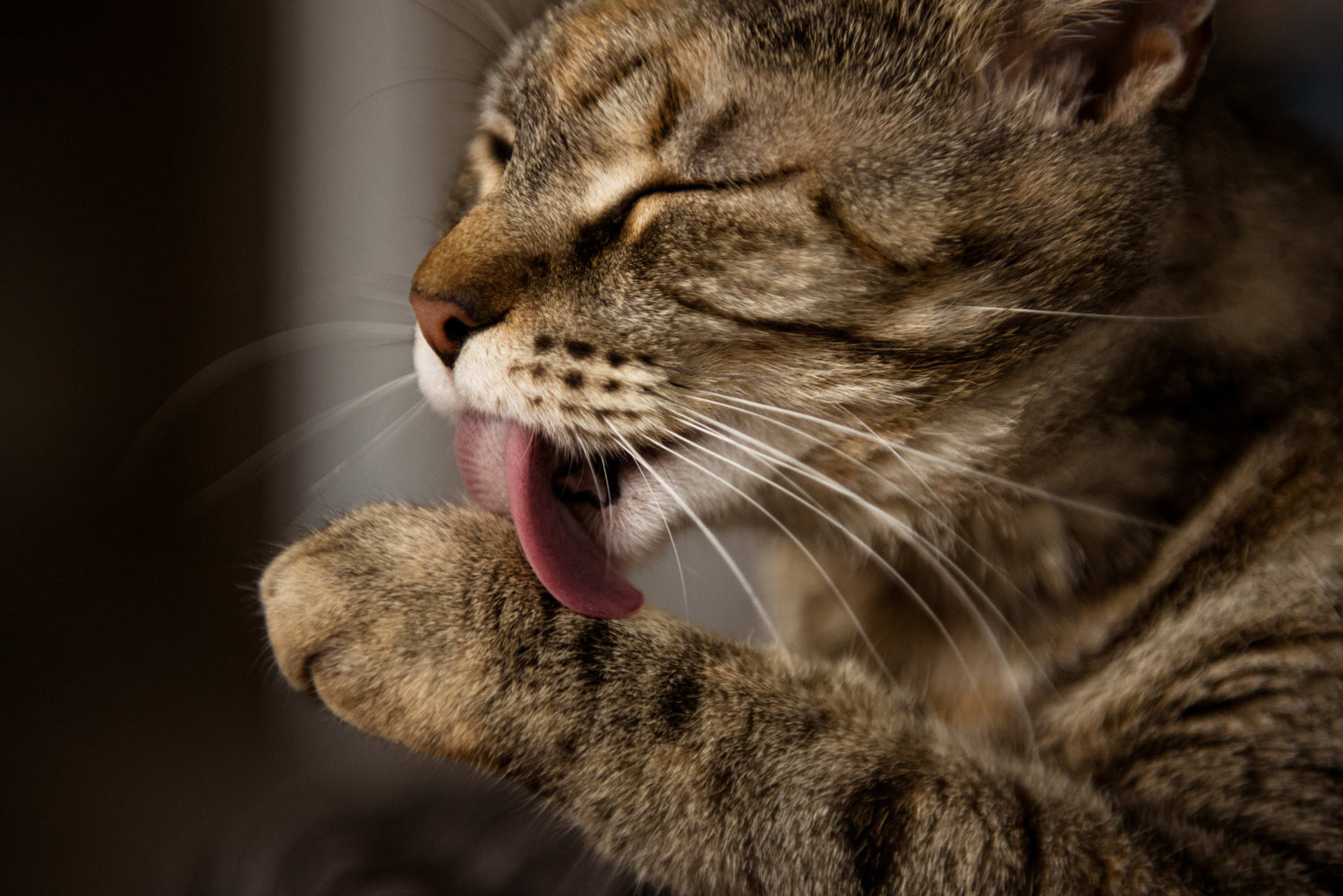Cat has a stuffy nose
Does your cat have a blocked nose, difficulty breathing and sneeze frequently? In addition to a harmless cold or a foreign body in the nose, more serious illnesses can also be responsible for the breathing problems. Find out here how to recognize a blocked nose in your cat, what possible causes there are and how you can help your darling and ensure that the cat's nose clears up quickly.
Recognizing a blocked cat nose
If your cat's nose is blocked, you will usually notice one or more of these symptoms :
- Frequent sneezing
- breathing difficulties
- panting
- nasal discharge
- External incrustations
- loss of appetite
[Rebuilding Cure+Sensitive]
Since cats cannot blow their noses like humans can, their only way of getting nasal secretions or foreign bodies out of their nasal cavities is by sneezing . If your cat has a blocked nose, you will notice that it sneezes very often.
Since the nasal cavities are blocked by something, affected animals usually also suffer from breathing difficulties. These can manifest themselves, for example, in unusual noises when breathing in and out , an increased respiratory rate and increased panting to take in air through the mouth.
Cats usually breathe at a rate of 20 to 30 breaths per minute . If your cat takes more than 35 to 40 breaths or if it is visibly breathing heavily, you should pay attention. Sometimes the animals also signal their need for air through their posture with their front legs stretched forward, a stretched neck and an open mouth. Regardless of the cause, acute respiratory distress quickly becomes dangerous and should be examined by a vet immediately.
In many cases, a blocked nose - especially with colds - is accompanied by nasal discharge . This is usually clear, but if the discharge is yellowish or white , it could be due to an infection with viral or bacterial pathogens. If the discharge is bloody, it is best to see a vet.
Due to the blocked nasal cavities and possible nasal discharge, crusts often form around the nostrils. If you notice this, you should help your cat and carefully remove the dried discharge with a damp tissue . However, if it is a crusted wound, you should not touch it and visit a vet if necessary.
Another sign of a blocked nose is loss of appetite . Due to the breathing problems, your cat's sense of smell is also impaired. However, it uses this to determine whether its food is edible and tasty. If it can no longer smell its food properly, it may refuse to eat it to be on the safe side. To ensure that your pet's health is not affected by the refusal to eat, you should make sure that it at least drinks enough . To intensify the smell of the food and make it tasty again for your sniffly cat, you could warm it up before serving it.
Important : Loss of appetite can have many serious causes. If you do not notice any other signs of a blocked nose, you should consider other illnesses as a possible cause and, if in doubt, always consult a veterinarian.
Causes of a cat's stuffy nose
A long list of complaints and illnesses can cause a cat's stuffy nose, for example:
- foreign body
- A cold
- cat flu
- dental diseases
- fungal infection of the nose
- tumor
- heart disease
- problems in the lungs
- allergy
foreign body in the nose
The simplest explanation for a blocked nose is that it is blocked by a foreign body. This could be, for example, dirt , food remains or an awn It could be grass or grain that got into your cat's nose while out and about. The cat tries to get rid of the foreign body by sneezing frequently. However, if the animal is unable to get the dirt or foreign object out of its nose by sneezing, you will need help from a vet.
A cold
Cats can also catch a cold in cold weather outside or in cold drafts in the home. The typical symptoms are similar to those of humans: Sniffles , sneezing , Cough , a runny nose and sometimes even Fever can occur. A harmless cold should usually subside within a few days - if this is not the case, there may be something more serious behind the symptoms.
cat flu
The best example of a serious illness is the cat flu – in technical terms also feline rhinitis Contrary to what the name suggests, cat flu is not a harmless cold, but a dangerous infection of the respiratory tract and mucous membranes, which can even fatal Cat flu can be caused by both bacterial and viral pathogens – for example, feline herpesvirus (FHV) or the feline calicivirus (FCV) . The disease is highly contagious , which is why affected cats should be immediately isolated from their conspecifics and common areas should be cleaned.
In addition to a blocked nose, cat flu can also manifest itself in sneezing, coughing, nasal discharge, lethargy, loss of appetite, fever, watery eyes and difficulty swallowing. If left untreated, the mucous membrane inflammation can chronic and can cause eye problems and pneumonia – and in the worst case, fatal.
Treatment by a veterinarian is therefore essential. Depending on the cause of the illness, the veterinarian can prescribe antiviral medication or antibiotics. In order to prevent infection or at least a serious course of the disease, it is recommended to treat cats against cat flu when they are kittens. to be vaccinated . The vaccination should then be refreshed at regular intervals.
fungal infection of the nose
A fungal infection of the upper respiratory tract also causes symptoms of a stuffy nose in cats. The fungi are often found in bird droppings or in the soil and are when inhaling absorbed by the four-legged friends. Therefore, the fungi initially cause problems in the nose, but can also quickly spread throughout the body. Cats that have a weak immune system – for example due to an illness such as feline AIDS – have a higher risk of becoming infected with fungi.
tumor disease
A tumor of the nasal cavity mainly affects older cats and blocks the nose. Usually only one nostril is affected at first, which can be one-sided discharge can be recognized. noises when breathing and increasing shortness of breath are also accompanying symptoms. The sooner the tumor is detected and treated by a veterinarian, the better.
problems in the lungs
Numerous lung diseases can also cause breathing difficulties and a stuffy nose. These include Parasite infestation with lungworms , to which outdoor cats are particularly susceptible. The worm larvae enter the body of the cats by eating host animals such as birds and mice or drinking from contaminated puddles. Treatment by a veterinarian and regular deworming the cat are very important here.
Furthermore, a cat can also have a pneumonia which include shortness of breath, Fatigue , fever, loss of appetite and bad breath and should be treated by a veterinarian.
As a result of a viral or bacterial infection, a tumor or a kidney disease The animals can also suffer from pleural effusion. pleural effusion is located Water in the lungs . Difficulty breathing, coughing, loss of appetite and unnatural postures are some of the symptoms. The fluid in the lungs should be removed by the vet as soon as possible.
allergy
As with humans, allergies can also be responsible for a stuffy nose and breathing problems in cats. The allergic reaction can be triggered by a variety of substances – for example pollen , Dust , Cat litter or food . Other symptoms that indicate an allergy are a runny nose, swollen, watery and red eyes, swelling and rashes on the skin and in the case of a food allergy including loss of appetite, Diarrhea and vomiting .
If you suspect an allergy, consider whether you have recently made a change to which your cat could now react allergically. This could be a new detergent, cat litter, or food, for example. A food allergy can also develop gradually. To determine the cause of the allergy and to protect your pet's stomach, you should use hypoallergenic diet follow an elimination diet.
Cat's stuffy nose - what to do?
If your cat suffers from a blocked nose and long-term respiratory problems, you should definitely see a vet. Since there are numerous possible causes of illness and health problems, it is very important that the doctor makes a diagnosis and begins appropriate treatment quickly. Depending on the symptoms, the doctor can take a swab or perform an endoscopy to make a diagnosis.
To prevent infection with viral or bacterial pathogens or parasitic infestation, you should always recommended vaccinations , for example against cat flu, and your cat deworm regularly .
If the blocked nose is due to a harmless cold, you can try to alleviate the symptom in consultation with the vet. To clear the nose, for example, Steam . You could use the Shower Let your cat run and spend some time in the room with your cat. Alternatively, there are also inhalation solutions suitable for cats. To ensure that the inhalation takes place safely, it is best to put your furry friend in its transport box with the door closed. In front of it, you can then place a bowl with the inhalation solution and place a towel over the carrier and bowl. Always discuss this procedure with your veterinarian and keep an eye on your cat at all times.
Important : Medical products and home remedies recommended for people with colds and stuffy noses should be Never use them for animals . They could be toxic and harmful to your four-legged friends. Instead, always seek advice from your vet and only use products that are suitable for cats.





